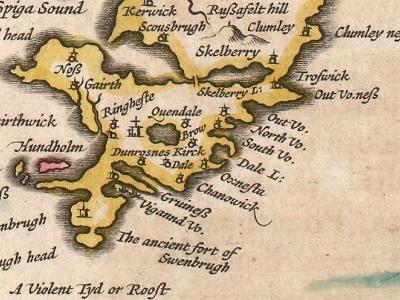
Research by Professor Matthew Bampton (Fulbright Visiting Professor 2014-15) into the Shetland community of Broo is featured in Science Magazine:
The farming town of Broo on Scotland’s Shetland Islands was no stranger to extreme weather. Located on an archipelago just south of the Arctic Circle, its inhabitants had braved lashing winds and bitter cold winters. But it was something else that did Broo in: sand. Beginning around 1665, a series of sandstorms like nothing seen before buffeted the island, burying homes, destroying fertile soil, and eventually forcing the townspeople to flee. Now, scientists think they know what caused the freak weather event—and why it left neighboring towns relatively unscathed.
The original journal article is available here, and a short film about the findings is available on Science Magazine's YouTube channel.
Matthew Bampton, Alice Kelley, Joseph Kelley, Michael Jones, Gerald Bigelow, Little Ice Age catastrophic storms and the destruction of a Shetland Island community, In Journal of Archaeological Science, Volume 87, 2017, Pages 17-29, ISSN 0305-4403, https://doi.org/10.1016/j.jas.2017.08.003.
(http://www.sciencedirect.com/science/article/pii/S0305440317301176)
Keywords: Little Ice Age; Storms; Sand dunes; Human response; Coastal; Simulation
